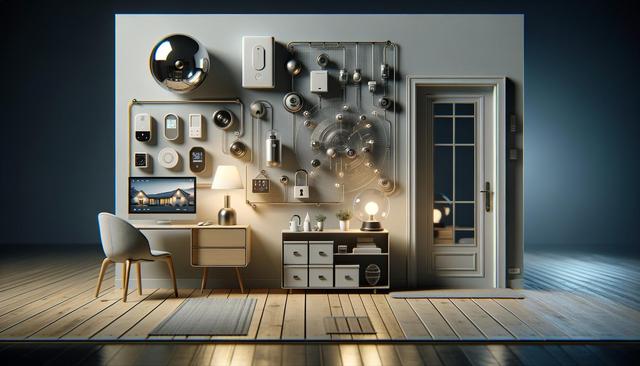
A Practical Guide to Home Security Systems
Understanding the Basics of Home Security Systems
Home security systems are designed to monitor your property, alert you to suspicious activity, and deter intrusions. They typically consist of a combination of sensors, control panels, cameras, and alarm systems. These components work together to provide a comprehensive safety net for your home. Whether you live in a busy urban neighborhood or a quieter rural setting, a reliable home security setup can be a valuable investment in your family’s safety.
There are two main types of systems: professionally monitored and self-monitored. Professionally monitored systems connect to a monitoring center that responds to alerts, often dispatching emergency services when necessary. Self-monitored systems send alerts directly to your mobile device, giving you the ability to respond as needed. Each option has its pros and cons, and the choice often depends on your lifestyle and preferences.
Key features commonly included in modern home security setups are:
- Motion detectors and door/window sensors
- Indoor and outdoor surveillance cameras
- Smartphone integration for remote monitoring
- Smart locks and video doorbells
- Environmental sensors for smoke, carbon monoxide, and flooding
Understanding these features and how they work together can help you make informed decisions when selecting a system that fits your specific needs.
Benefits of Installing a Home Security System
Installing a home security system goes beyond just deterring burglars. It adds multiple layers of protection that can be tailored to your lifestyle. One of the most immediate benefits is the sense of security it provides. Knowing that your home is being monitored, whether you are on vacation or asleep at night, can significantly reduce anxiety about potential threats.
In addition to psychological comfort, practical benefits include:
- Lower insurance premiums: Many insurance companies offer discounts for homes equipped with security systems.
- Emergency response: Integrated systems can automatically alert authorities in case of fire, break-in, or medical emergency.
- Remote access: With smart home integration, you can check on your home from anywhere using your smartphone or tablet.
Furthermore, security systems can facilitate better energy and resource management. For example, systems that include smart thermostats and lighting controls enable you to optimize energy usage while keeping your home safe and comfortable.
Choosing the Right System for Your Home
Selecting the right home security system can feel overwhelming given the numerous options available. To simplify the process, start by assessing your specific security needs. Consider the size of your home, the number of entry points, and your daily routines. A small apartment might only require a basic setup, while a large house may benefit from a more comprehensive system with multiple cameras and sensors.
When evaluating different systems, pay attention to:
- Installation requirements: Some systems are DIY-friendly, while others require professional installation.
- Budget: Costs can vary widely depending on features and service plans.
- Scalability: Choose a system that can grow with your needs, especially if you plan to expand or renovate your home.
- Customer support and warranties: Look for providers that offer reliable customer service and strong product guarantees.
Taking the time to compare features, read user reviews, and possibly consult with a security expert can help you find a system that offers both functionality and peace of mind.
Smart Technology and Integration
The integration of smart technology into home security systems has revolutionized how homeowners protect their property. Smart systems sync with mobile apps, allowing real-time alerts, live video feeds, and remote control of locks, lights, and alarms. These features not only add convenience but also enhance overall security by giving you more control over your environment.
Examples of smart integrations include:
- Voice assistant compatibility for hands-free control
- Geofencing features that activate or deactivate systems based on your location
- Event-triggered automation, such as turning on lights when motion is detected
These innovations make it easier than ever to stay aware of what’s happening at home, even when you’re miles away. However, it’s important to ensure your system is secured with strong passwords and regular software updates to prevent unauthorized access.
Maintaining and Upgrading Your Security System
Once your system is installed, regular maintenance is key to ensuring ongoing effectiveness. Testing sensors and alarms monthly, replacing batteries on schedule, and keeping software updated are simple yet essential tasks. Many systems offer automated reminders and status checks to help you stay on top of maintenance.
As technology evolves, consider upgrading parts of your system to take advantage of new features. For instance, older cameras might be replaced with models offering higher resolution or better night vision. Upgrading to a cloud-based storage option for video footage can also enhance data security and accessibility.
When performing system checks, be sure to:
- Inspect outdoor cameras for obstruction or damage
- Review event logs regularly to identify any unusual activity
- Test backup power sources to ensure functionality during outages
Consistent upkeep not only improves system performance but also extends the life of your investment.


